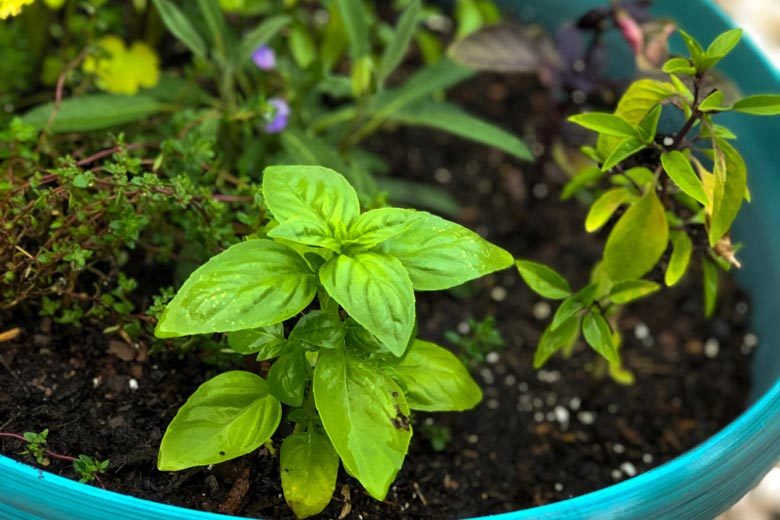
This is my first year cultivating an herb garden! Mind you, it is a super small-scale herb garden, but I am so excited to have fresh herbs to add to my dishes.
I have various kinds of herbs in my garden, but today I want to highlight basil.![]() I have three types of basil in my garden right now: sweet basil, Thai basil and purple basil!
I have three types of basil in my garden right now: sweet basil, Thai basil and purple basil!
Sweet Basil
Arguably the most popular form of basil, sweet basil is well known for its anti-inflammatory, antibacterial and antioxidant properties — making this herb perfect for anti-aging and decreasing chances of chronic diseases. This flavorful herb is used in many different cuisines but primarily known for Italian cooking such as pesto, bruschetta, caprese and various pasta dishes. Adding a few fresh leaves of basil to your dishes will not only add freshness but will also boost the nutritional content of your meal.
Thai Basil
Have you ever gone to a Thai restaurant and ordered a “Basilia” dish? You might be eating Thai basil! Just like the name states, Thai basil is an herb used in most Southeast Asia cuisines —especially Thai. Infused in many curries, sauteed with meats and veggies, or simply used for a garnish, Thai Basil is mildly sweet with a little more of a bitter, licorice-like bold flavor than sweet basil. In most recipes, Thai basil can be substituted for sweet basil, making them interchangeable.
Purple Basil
In all honesty, I had never heard of purple basil until I planted it in my garden! The deep, rich purple color is a nice accent to my other herbs, and it smells divine — quite similar to other basil family members. While there are similarities of this herb to other basil plants, this herb is more earthy, less sweet and comparable to the flavor of cloves. Purple basil is primarily used for infusing oils and vinegar as well as garnishing dishes.
This herb is nutritionally comparable to other types of basil, meaning it is high in anti-aging and anti-cancer properties. In general, purple plants are high in anthocyanins, which are antioxidants that may offer anti-inflammatory, anti-viral and anti-cancer benefits.
Ways to Incorporate Basil into Meals and Snacks
- Make your own homemade basil pesto (traditionally made with olive oil, pine nuts and basil)
- Toss with other mixed greens and veggies for a salad
- Homemade salad dressing using fresh or dried basil
- Saute with veggies
- Add to pasta dishes
- Top fresh pizza
- Caprese salad with mozzarella balls, fresh basil and grape tomatoes all tossed in olive oil
- Combine with watermelon and feta for a refreshing summer salad
- Make a panini with fresh basil, mozzarella and tomato
- Freshen your water with basil and lemon
- Infuse olive oil with purple basil for a strong, aromatic flavor


